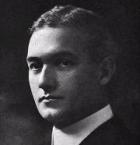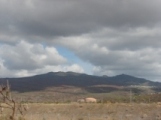Digital Collections
Celebrating the breadth and depth of Hawaiian knowledge. Amplifying Pacific voices of resiliency and hope. Recording the wisdom of past and present to help shape our future.
Kristy Perez-Kaiwi [Ka‘iwakīloumoku]
The Oʻahu Railway and Land Company (OR&L Co.) began running on November 16, 1889. Envisioned and established by Benjamin Franklin Dillingham, the Oʻahu Railway and Land Company served as the vehicle primarily transporting sugar cane to the sugar mills.
Benjamin Dillingham was a business man born on September 4, 1844 in Cape Cod, Massachusetts. During a visit to Honolulu in 1865, he fell off a horse and broke his leg. This visitation led to a permanent residence in Hawai‘i where he would then engage in mercantile business, railway promotion, and sugar plantations, becoming one of the foremost men of the enterprise [1]. One of his sons, Walter Francis Dillingham, would subsequently inherit the OR&L Co. after his father’s passing in 1918 [2].
The OR&L Co. not only transported sugar cane, but also, passengers, mail and parcels, equipment, and freight cars. Ali‘i and dignitaries would also ride the railway in the Parlor car; songs were even composed of their journeys on the train. The last train ride occurred in 1947, after World War II and the departure of the military men to their families and new ports on the continent. This signaled the end of the Oʻahu Railway and Land Co. until 1970.
In 1970, thanks to the hearts of a few men, the desire to save and restore railroad locomotives began. Over the course of 3 years, the Hawaiian Railway Society was born. This educational, non-profit organization is a local chapter of the National Railway Historical Society and is registered with the National Register of Historic Places (added in 1975).
Every Sunday, the sound of the train horn can be heard through the plains of Kaupe‘a, Kapolei. Such an unusual feeling arises when hearing the sound of the only operating railroad in the State of Hawai‘i. As passengers board this train for a 90 minute excursion, one can’t help but sense the nostalgia of this 120 year old railway.
The curator begins the train ride through the dry and arid Kalaeloa. In the 1930s, a coral pit was dug up to build new roads for the Barber’s Point Naval Station. Now, this large pit will be used as an underground parking lot for a future mall in the near future. Hotels and homes are also included in this new development project. The large blanket of coral and dirt was once covered in sugar cane. The remaining ditches were used to prevent flooding in the cane fields. The old Fort Barrett road is now a cemented wall across from the Kapolei High School. There used to be a little development with barber shops and everything. The area is now bare with nothing but dirt and coral.
As we passed through the dry brush of burned kīawe trees and desolate ground, Makakilo stands majestically. There’s a short pu‘u located in the Makakilo region called Pu‘u Makakilo. In the old days, when the skies were clear, islands to the east of O‘ahu could be seen. It is possible that this area may have been used as an observatory.
We came upon the Ko ʻOlina golf course and viewed the newest development on the property, the Disney Aulani Hotel. We passed the beautiful Lanikūhonua and lū‘au grounds of Paradise Cove. This special place was once owned by Kamokila Campbell, daughter of the second largest landowners in Hawai‘i, James and Abigail Campbell. The shoreline is a beautiful sight to see! This view cannot be seen on the main road, only by foot or by riding the train.
The final stop was across the street from the Kahe Power Plant. It allowed us to rest at the beach front views of Kahe point. Before we knew it, we were heading back to the ‘Ewa train station…our train experience had come to an end.
For more information on the Hawaiian Railway Society, visit: www.hawaiianrailway.com.




